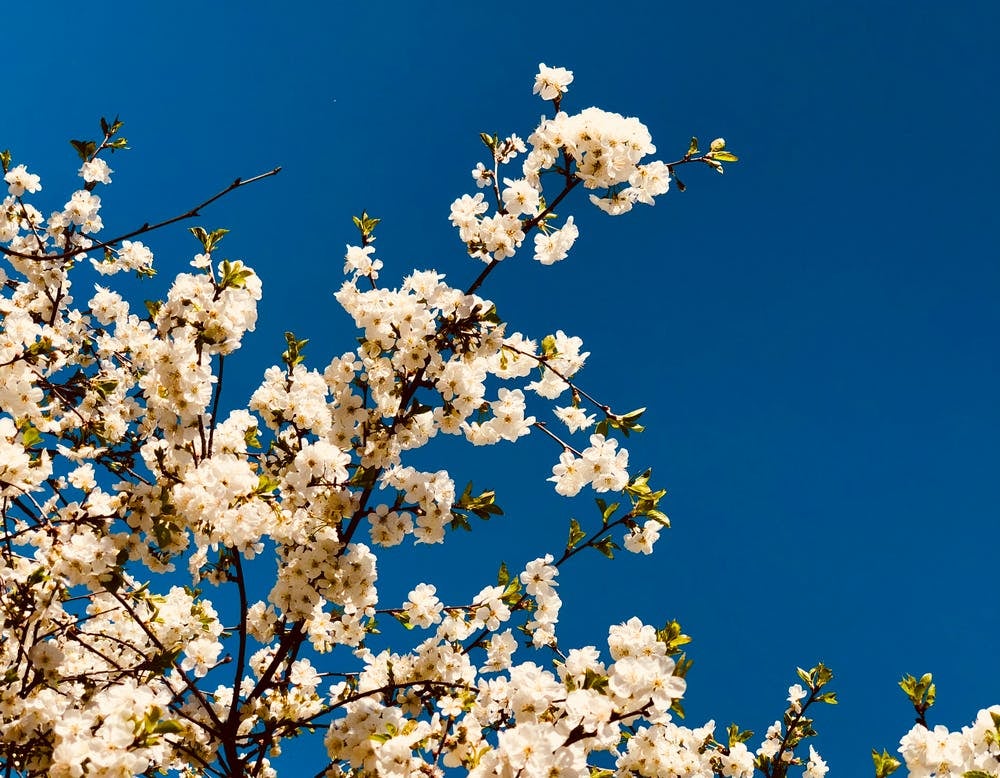Studio Ghibli is arguably one of the most elegant, transcending, majestic animation studios in the world. Deserving of every award they’ve been nominated for, the studio has increasingly gained worldwide recognition, especially since the turn of the 21st century.
Most people associate renowned director and co-founder Hayao Miyazaki with the animation studio, as his films are some of the most well-known and award-winning of the Studio Ghibli collection. However, there are plenty of non-Miyazaki films, that even the longest Ghibli fans overlook, that deserve as much recognition.
You may be familiar with My Neighbor Totoro and Spirited Away, but I’m here to let you know which non-Miyazaki-directed Studio Ghibli works to try out for your next movie night.
Whisper of the Heart (耳をすませば; Mimi wo Sumaseba)
Director: Yoshifumi Kondō; Year: 1995
The first film on this list is Whisper of the Heart: my personal non-Miyazaki favorite, one of my top ten Studio Ghibli films, and probably the film I consider most underrated (although that title can also be applied to the second movie on this list).
Taking place in the nineties, Whisper of the Heart is a coming-of-age story of Shizuku, a young teenage girl discovering the adrenaline, struggle, and beauty in finding her passions, forging her own path, and figuring out what it means to meet her potential as an artist.
Shizuku is an avid lover of fantasy novels and magic, a stark contrast to the “concrete roads” of her home in Western Tōkyō, a refreshing change in scenery for a Studio Ghibli movie. Ghibli movies are famous for their rich, lush, green, and fantastical locations, but Whisper of the Heart is unique in its depictions of real-life locations within the urbanized prefecture of Tōkyō. Even though I didn’t grow up in Tōkyō, I love that there is a strong sense of nostalgia in Shizuku’s everyday life growing up in the city.
Not to mention, there’s a preciously sweet romance between Shizuku and Seiji, a classmate who is also challenging his skills in violin-making. The young students are attracted to each other’s passion and determination while they also serve as the inspiration for the other. Isn’t that the ultimate power couple dynamic we all long for? It’s definitely mine!
I cannot recommend Whisper of the Heart enough. The first time I watched it, I finished the film feeling full of warmth and joy. I happily rewatched it another two times in the same week and surrendered to unironically having Olivia Newton-John’s rendition of John Denver’s “Country Roads” (an unexpectedly wonderful and vital inclusion to the film) stuck in my head for days after. You will too, once you watch the movie!
The Tale of the Princess Kaguya (かぐや姫の物語; Kaguya-Hime no Monogatari)
Director: Isao Takahata; Year: 2013
Next up is The Tale of the Princess Kaguya, the last film directed by Studio Ghibli co-founder Isao Takahata before his passing in 2018.
Originally featured in The Tale of the Bamboo Cutter, one of the country’s oldest folktales, Princess Kaguya, or Kaguya-Hime, is a very familiar character in Japanese culture. Takahata retells the Princess’s story through a unique animation style that was new to Studio Ghibli. The gorgeously hand-drawn and watercolor frames are what reportedly took the film eight years to produce.
As told in the fable, one day, an old bamboo cutter discovers a small glowing nymph in a bamboo shoot and brings her home to his wife. Together, the childless couple decides to raise her as their own. Convinced that she was sent from the heavens, the bamboo cutter eventually moves the rapidly growing young girl to the capital to become a noble, giving her the name “Kaguya,” meaning “shining” at her coming-of-age ceremony. Attracting attention from the highest of suitors, the Princess gives each of them impossible tasks to prove their so-called true love for her.
This story has been adapted many times, but Takahata’s film explores the traditional story through a more empathetic lens towards the young woman, depicting her sadness and complications in wanting to live freely but facing a patriarchal society and its accompanying gender roles.
With its emotionally expressive art style, The Tale of the Princess Kaguya will have you weeping throughout. The bittersweet ending illustrates the dialectic of ultimate joy and ultimate sadness in life—the privilege to experience love and loss, even when it may be painful.
When Marnie Was There (思い出のマーニー; Omoide no Mānī)
Director: Hiromasa Yonebayashi; Year: 2014
When Marnie Was There may not be a particularly unique story, but is nevertheless emotionally compelling.
The movie follows Anna, a young girl who feels misunderstood, lonely and unwanted due to the loss of her biological family at a young age, and from feeling like both a commodity to and a burden on her foster parents.
Inspired by a doctor’s recommendation to take a break from the city for her health, Anna leaves Sapporo to stay with family friends in the Hokkaidō countryside, where she continues to feel isolated from the other young girls in the community.
In the country, Anna notices a large mansion by the marshes and befriends Marnie, the girl who lives there. Eventually, it becomes clear to both Anna and the audience that Marnie is not physically present in Anna’s world, but Anna continues their friendship, as she finds a connection and solace with Marnie.
I feel that it is important to note that many Western audiences perceived a suggested romantic sapphic relationship between Anna and Marnie in the promotion and duration of the film. Some people expressed concern that the movie (this article contains spoilers!) is queer-baiting, which is when projects continuously suggest there being an LGBTQ+ relationship or interest between two characters without every actually showing it or denying it all together. However, some others don’t see that and insist that the girls’ relationship is an exaggerated intimate platonic one, as many young female friendships are often depicted in Japanese media in a similar manner, and the difference in interpretation may be a result of cultural differences. Personally, I noticed a couple lines from Anna that, even in Japanese, could suggest that she feels otherwise, though most agree that Marnie consistently does not suggest romantic interest in Anna.
Despite how you feel about the depiction of their relationship, the movie’s themes of friendship, understanding, and love are universal, whether you see Anna simply as a lonely foster child or an unspoken member of the LGBTQIA+ community.

Ocean Waves (海が聞こえる; Umi ga Kikoeru)
Ocean Waves is a classic teenage tale told entirely through flashbacks by the protagonist, Taku, who takes a trip down memory lane as his high school reunion approaches. He recalls how his relationship with his best friend, Yutaka, changed when they both developed relationships (though very different) with Rikako, a troubled girl who begrudgingly moved from Tōkyō after her parents’ divorce.
Unique from other Ghibli movies, Ocean Waves takes place in Kōchi, a prefecture located on Shikoku island, so the characters speak in the Tosa dialect, which is definitely a shocking change if you’re only used to hearing the Standard, aka Tōkyō, Japanese dialect (just like Rikako!)
In true Ghibli fashion, the film’s major theme is nostalgia. Taku accepts the naivete in young relationships and how sometimes, you can only realize after you’ve matured exactly how you may have misinterpreted a situation, the significance of a moment, or even your own feelings as a young adult.
What’s interesting about this movie is that it was produced as a project for the studio’s younger animators to experiment and was released as a TV movie, unlike many other Ghibli films. While receiving generally favorable reviews, Ocean Waves is considered one of the worst (or completely forgotten) Studio Ghibli films, which speaks to how high of a caliber that the animation studio has set for itself, rather than the actual quality of the film.
Though the plot is quite simple, the characters and their relationships to each other (particularly Rikako, in all of her unlikeable-but-somehow-irresistible glory) are pretty true to the teenage experience. If you’re into reflective teenage movies or just want to feel some nostalgic summer vibes, I definitely recommend checking out Ocean Waves, if only to see what the up-and-coming animators at Studio Ghibli produced.
Only Yesterday (思いでポロポロ; Omoide Poroporo)
Director: Isao Takahata; Year: 1991
Similar to Ocean Waves, Only Yesterday is another Ghibli movie that utilizes flashbacks and opts for realism to tell its story.
Only Yesterday is about Taeko, a single Tōkyō native in the eighties. During a trip to the countryside, the movie alternates between flashbacks of Taeko’s childhood memories and present day.
Yet another “slice-of-life” piece, Takeo’s memories are not exactly significant milestones of her adolescence, but rather smaller memories made between the day-to-day of growing up.
Adult Taeko’s reflections explore what our younger selves dreamed of versus the reality of adulthood and life, and the resulting challenge in finding fulfillment for both your adult self and idealistic inner-child. Ranging from conflict with a classmate to the first and only time her father slapped her, Taeko’s memories reveal her maturation on greater themes of class differences, empathy, and uncertainty in new experiences, like puberty, romance, and familial tension.
I remember watching Only Yesterday when I was younger and considering it quite slow and boring. However, now that I’ve rewatched it after becoming a little older, I find that while the movie is definitely not fast-paced, it’s powerfully poignant in its simple but sentimental exploration of feeling a little lost and uncertain about who you would be and where your life may be heading compared to where you thought it would. I also find Taeko’s happy-go-lucky attitude about her life amongst the patriarchal standards of eighties Japan very refreshing. Despite taking place forty years ago, I believe Taeko is still relatable to the 21st-century woman, and her story should be given a chance.
—
I hope this list has helped you discover a new Studio Ghibli movie that you may have not heard of before. Studio Ghibli movies, whether whimsical and daring or realistic and reflective, convey emotionally moving journeys for their characters. Even the “worst” Ghibli movies are still very decent movies, so know that you really can’t go wrong with any Studio Ghibli film you choose to watch. With that, happy viewing!



